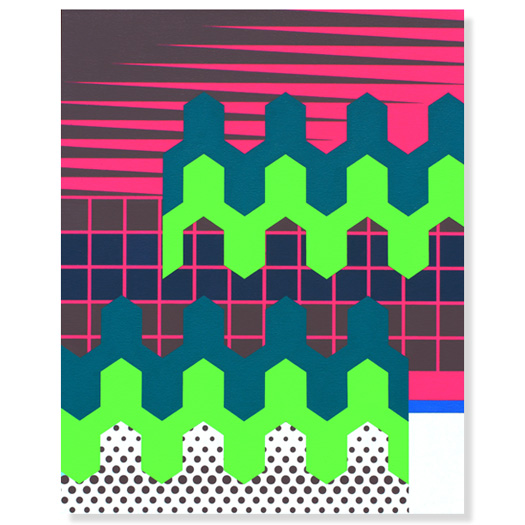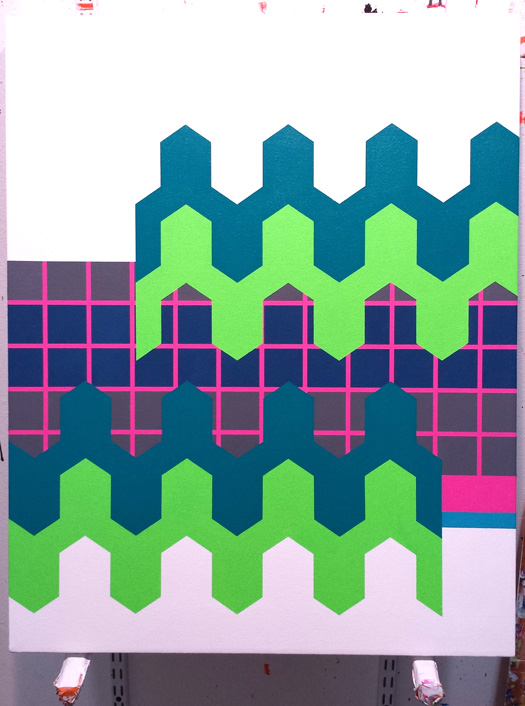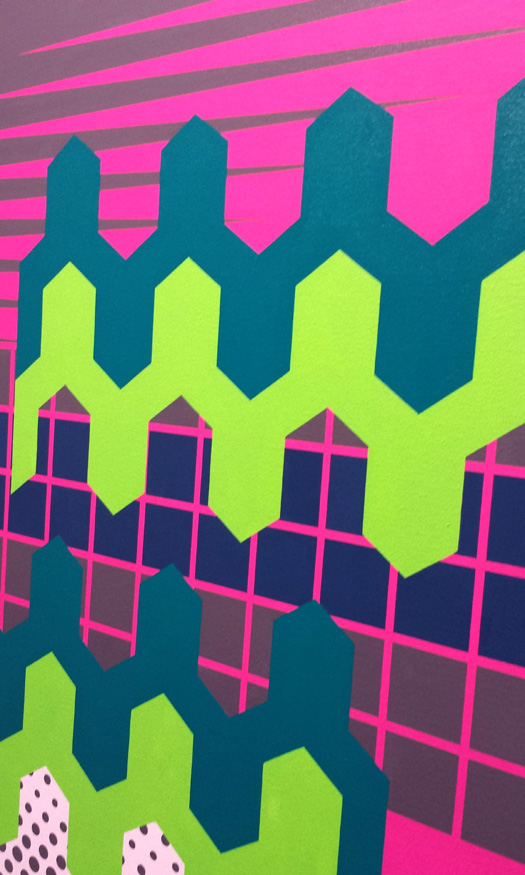
A Newness Clean and Pure. 2014. Acrylic on canvas. 30 x 24 inches (76 x 61 cm).
July 25th, 2014 | No Comments

This week’s Painting of the Week is A Newness Clean and Pure, which I finished Thursday. It’s an acrylic on canvas piece that measures 30 by 24 inches (76 x 61 cm).
Pure and simple, this painting is a mashup of graphical motifs that have interested me of late. This painting is just me having fun — trying to make something new!
The grid and heraldic vair-en-pointe waves served as the starting point for this composition. The patterns at the top and bottom were added later, in an improvised fashion. A work-in-progress photo shows what the painting looked like before I began to improvise my way toward the finish.

The title comes from a phrase I heard in a Freakonomics podcast about Japanese residential architecture, titled “Why Are Japanese Homes Disposable?” Noting how the all-wood Shinto shrine at Ise is rebuilt every 20 years, architect Alastair Townsend points out that Japanese culture values newness as something “spiritually clean and pure.” This might help to explain why Japanese homes are torn down every 30 years. (A bigger reason, Townsend observes, might be fear of earthquakes, and a perceived need for the latest earthquake-resistant technology.)

Each painting is a voyage into newness. The act of conceiving a painting feels like tapping into the electricity that permeates everything, that energy that powers the creative act.
I have been putting greater emphasis on improvisation lately, as well. With the recently loss of the late jazz great Charlie Haden, I have had free jazz on my mind lately. Haden said, “The artist is very lucky, because in an art form that’s spontaneous like [jazz], that’s when you really see your true self.”
And so, obsessed with making, I continue to make. It is not a question of good or bad, or of right or wrong. To make, to improvise, this is a way of connecting with newness and seeing one’s true self.